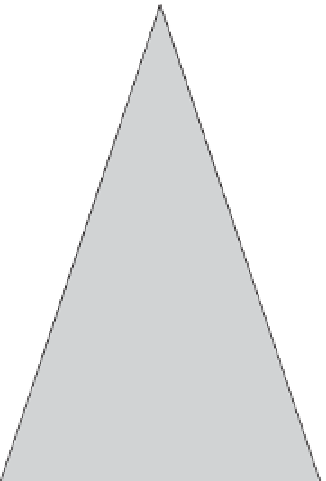Agriculture Reference
In-Depth Information
understanding of the science by the user
(e.g. definition of genetic potential, feed in-
take regulation); (ii) provide a user manual
on the model; and (iii) advise on the meth-
odology for running simulations, optimiza-
tions or predictions. Appropriate documen-
tation should facilitate technology transfer
while enabling the user to run simulations
frequently and rapidly on their own and
maintain their skills in model application.
One of the major concerns of users re-
lates to the parameters that define genetic
potential and environmental conditions. In-
deed, in most cases the same feed is allocated
to several flocks and there is a limited num-
ber of feeds that are manufactured by the feed
mill for production efficiency reasons. The
difficulty faced by users is their ability to de-
scribe the genetic potential and the average
environmental conditions of every flock of
birds depending on their performance. Also,
the user may not have all the information
needed to define accurately the genetic po-
tential and environmental conditions in
every flock. As an alternative to simulating
the performance of every flock a database of
genetic potentials and environmental condi-
tions could be generated and used as inputs.
This approach may help the user to generate
simulations easily and rapidly with no need
to identify the performance of every flock.
Application process
The virtuous circle of model application
in both research and industry is presented
in
Fig. 8.3
. An efficient model application
strategy relies on the definition of one sin-
gle objective of improvement prior to running
simulations. This pre-defined objective
should refer to either a technical growth
performance objective (e.g. feed conver-
sion, live weight at a given age), an economic
objective (e.g. feed cost per kilogramme of
live weight, production cost per kilogramme
of breast meat) or an environmental objective
(e.g. phosphorus excretion) and should be
quantifiable (e.g. three-point improvement
in feed conversion, 2% improvement in live
weight in
17
weeks of age in male turkeys).
The user and other stakeholders must be
aware that some trade-offs must be made
because improving one output (e.g. feed
conversion) may negatively affect other
1.
Model simulation:
Picture of current situation
Computer simulations
What can be
improved ?
2.
Model predictions
Alternative solution(s)
R&D
trials
(if required)
Post-launch
evaluation
3.
Evaluation
Validation of model alternative(s)
Validation trials
Meta-analysis
3.
Ta rgeted implementation:
New feed programme alternative
tested in targeted clients
Ta rgeted clients
4.
Large field implementation:
New feed programme in place
Commercial barns
Fig. 8.3.
Illustration of the continuous improvement process with animal growth models.











